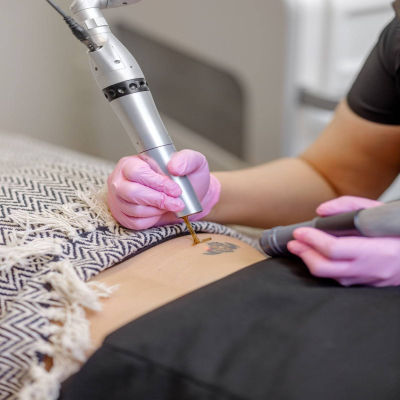Tattoo removal has historically been a challenging and often ineffective process, but advancements in laser technology have made it more accessible and effective. However, misinformation still abounds, leading many to have misconceptions about the procedure. Understanding the truth behind these myths is crucial for anyone considering Laser Tattoo Removal Oman.
Myth 1: Laser Tattoo Removal Is Always Painful
Reality
One of the most common myths is that laser tattoo removal is excruciatingly painful. While some discomfort is associated with the procedure, modern laser technology and pain management techniques have significantly improved the experience. Many patients describe the sensation as similar to a rubber band snapping against the skin.
Pain Management
Pain can be managed through various methods, including topical numbing creams, cooling devices, and local anesthesia. The level of discomfort can vary depending on the individual’s pain threshold, the location of the tattoo, and the size and color of the tattoo being removed.
Myth 2: Laser Tattoo Removal Is Ineffective on All Tattoo Colors
Reality
It's a common belief that laser tattoo removal is ineffective for certain colors. While it's true that some colors are more challenging to remove than others, advances in laser technology have improved the effectiveness of removing a wider range of colors.
Color-Specific Challenges
- Black and Dark Colors: Black ink is the easiest to remove as it absorbs all laser wavelengths.
- Red and Yellow: These colors are more resistant but can still be effectively treated with the appropriate lasers.
- Green and Blue: These colors are more difficult but can be removed with specialized lasers designed for these wavelengths.
Myth 3: One Session Is Enough
Reality
Many people believe that a single laser session will completely remove a tattoo. In reality, multiple sessions are typically required to achieve complete removal.
Session Frequency and Duration
The number of sessions needed depends on various factors, including the size, color, and age of the tattoo, as well as the individual’s skin type and healing response. Sessions are usually spaced several weeks apart to allow the skin to heal between treatments.
Myth 4: Laser Tattoo Removal Leaves Scarring
Reality
Another misconception is that laser tattoo removal always results in noticeable scarring. While scarring is a possibility, it is not a guaranteed outcome.
Minimizing Scarring
To minimize the risk of scarring, it's important to follow post-treatment care instructions and choose a skilled practitioner. Advanced laser technologies and techniques are designed to reduce the likelihood of scarring and promote better healing.
Myth 5: Laser Tattoo Removal Is Unsafe
Reality
Some believe that laser tattoo removal is unsafe or can cause serious side effects. When performed by a qualified and experienced professional, the procedure is generally safe.
Safety Measures
The safety of laser tattoo removal is ensured through:
- Pre-Treatment Assessment: Evaluating the skin type and tattoo characteristics.
- Proper Equipment: Using FDA-approved lasers and equipment.
- Experienced Practitioners: Ensuring the procedure is performed by trained professionals.
Myth 6: Laser Tattoo Removal Is Only for Large Tattoos
Reality
There is a misconception that laser tattoo removal is only suitable for large tattoos. In fact, the procedure can effectively address tattoos of various sizes.
Treatment Flexibility
Laser tattoo removal is adaptable and can be customized to treat both small and large tattoos. Smaller tattoos may require fewer sessions, while larger tattoos might need more extensive treatment.
Conclusion
Understanding the facts about laser tattoo removal is essential for making an informed decision about the procedure. By debunking these common myths, individuals can approach tattoo removal with a clearer understanding of what to expect. Modern laser technology offers a safe and effective solution for removing unwanted tattoos, with advancements continually improving the outcomes and experiences for patients. If you're considering tattoo removal, consulting with a qualified professional will help ensure the best results and address any concerns you may have.






Comments